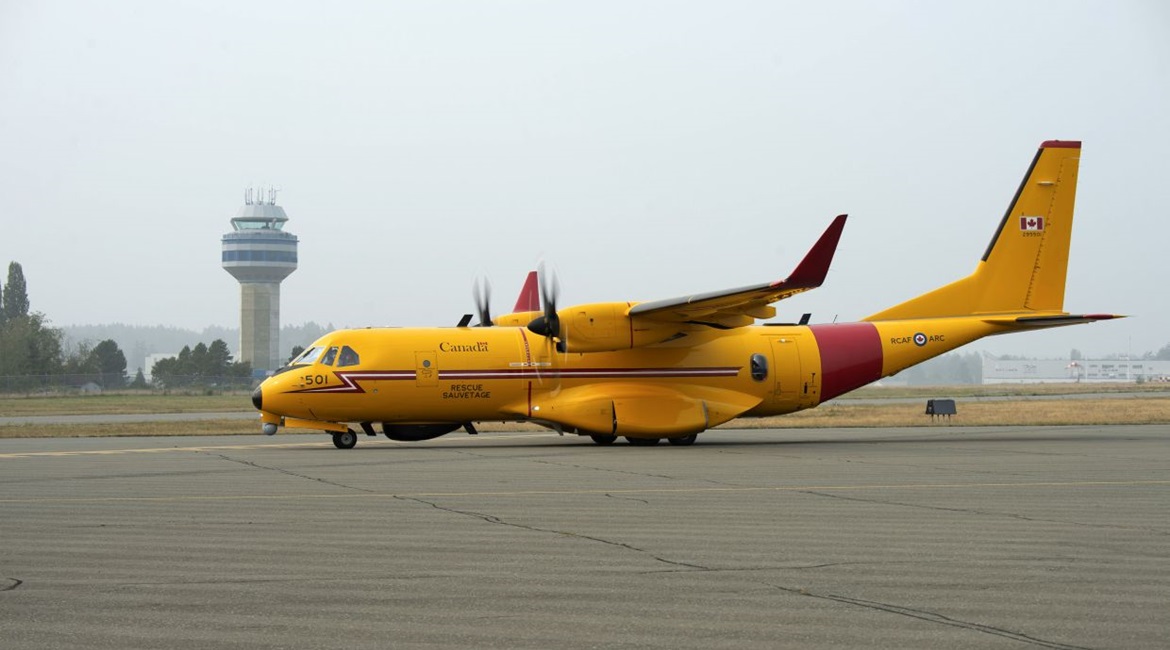
The Canadian Armed Forces (CAF) seeks a mobile phone detection system for its search and rescue (SAR) rotary- and fixed-wing platforms that will allow the CAF to locate and communicate with operational mobile phones on persons in distress during missions.
The Cellular Airborne Sensor Search and Rescue (CASSAR) project will provide a carry-on/carry-off type of kit that the Royal Canadian Air Force (RCAF) will implement on its eight aircraft platforms on SAR standby, including the new Airbus Defence and Space C295W (CC-295 in Canadian service) Kingfisher fixed-wing platform. Brigadier-General Colin Keiver, RCAF director general for air and space force development, told Janes on 29 September that as long as a SAR subject has a mobile phone on, the CAF can both locate and communicate with the search subject.

The RCAF’s first CC-295 pictured during a delivery ceremony on 25 September. The CAF seeks a mobile phone detection system for its search and rescue rotary- and fixed-wing platforms that will allow the CAF to locate and communicate with operational mobile phones on persons in distress during missions. (Department of National Defence)
Brig Gen Keiver said that one of the first things Canada’s Joint Rescue Coordination Centre (JRCC) will do when it receives a distress call is try to obtain the rescue subject’s mobile phone International Mobile Equipment Identity (IMEI) code from a family member. The IMEI code is a unique 15-digit code that precisely identifies a mobile device. The IMEI code then gets programmed into the mobile phone detector.
Looking to read the full article?
Gain unlimited access to Janes news and more...






